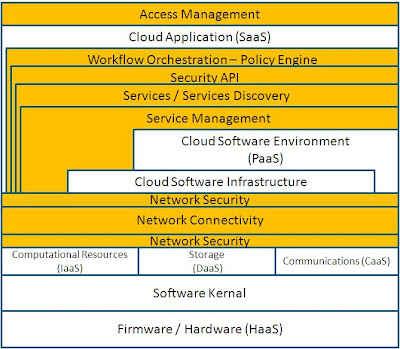Twitter Feed
Transformation Network
The Achilles heel of every transformative business model is their reliance on ever increasing amounts of data that need to be transported quickly across wide area networks and processed at…
Essential Characteristics of Cloud Computing as Digital Transformation
Hybrid IT blends traditional datacenters, managed service providers, and cloud service providers to deliver the necessary mix of information technology services. This IT consumption model enables a composable infrastructure which…
Transformation Innovation
4 Factors Driving Digital Transformation ROI The critical assessment factors for cloud ROI risk probability are the following: Infrastructure utilization Speed of migration to cloud Ability to scale business/mission processes…
Transformation Frameworks
Digital transformation necessitates changes in an organization’s operational processes. According to Harvard, a focus on operations can lead to business process optimization and entirely new revenue streams. Three common routes…
Transformation Infrastructure
Hybrid IT enables a composable infrastructure which describes a framework whose physical compute, storage, and network fabric resources are treated as services. Resources are logically pooled so that administrators need…
Essential Characteristics of Cloud Computing as Digital Transformation
A survey of 2,000 executives conducted by Cognizant in 2016 identified the top five ways digital transformations generate value: Accelerating speed to market Strengthening competitive positioning Boosting revenue growth Raising…
Embrace Transformation
From a business perspective, differentiating business processes and quality customer service are central to overall success. Business leaders must therefore clearly identify and measure how information technology contributes to the…
Computer Vision Advances Zero-Defect Manufacturing
by Kevin L. Jackson Electronics manufacturers operate in a challenging environment. It’s hard enough to keep up with the ever-accelerating rate of change in the industry. Now customers want increasingly…
Real-Time Analytics Power the Roadway of the Future
By Kevin L. Jackson The complexities of citywide traffic are pushing the limits of existing transportation management systems. Outdated infrastructure is based on proprietary, single-purpose subsystems, making it costly to…
Thriving on the Edge: Developing CSP Edge Computing Strategy
Communications Service Providers (CSPs) are facing significant business model challenges. Referred to generally as edge computing, the possibilities introduced by the blending of 5G networks and distributed cloud computing technologies are…
This week I’ve had the pleasure of presenting at two fairly unique conferences.
 In order to better adapt this excellent framework for my audience, I then presented my personal views on how this framework could be modified to address DoD, DHS and Intelligence
In order to better adapt this excellent framework for my audience, I then presented my personal views on how this framework could be modified to address DoD, DHS and Intelligence
 Key modifications include:
Key modifications include:
- The addition of an access management layer
- Explicit SOA related layers to address workflow orchestration, application security and service management
- Explicit connectivity layer in order to avoid a common assumption that the public Internet is always used as the networking layer in cloud computing solutions
This approach seemed to enhance the conversation and interest so I’m now putting this out to the wider community for consideration.
Your comments are welcomed and appreciated.
1 Comments
Cloud Computing
- CPUcoin Expands CPU/GPU Power Sharing with Cudo Ventures Enterprise Network Partnership
- CPUcoin Expands CPU/GPU Power Sharing with Cudo Ventures Enterprise Network Partnership
- Route1 Announces Q2 2019 Financial Results
- CPUcoin Expands CPU/GPU Power Sharing with Cudo Ventures Enterprise Network Partnership
- ChannelAdvisor to Present at the D.A. Davidson 18th Annual Technology Conference
Cybersecurity
- Route1 Announces Q2 2019 Financial Results
- FIRST US BANCSHARES, INC. DECLARES CASH DIVIDEND
- Business Continuity Management Planning Solution Market is Expected to Grow ~ US$ 1.6 Bn by the end of 2029 - PMR
- Atos delivers Quantum-Learning-as-a-Service to Xofia to enable artificial intelligence solutions
- New Ares IoT Botnet discovered on Android OS based Set-Top Boxes











Personally, I wouldn’t combine multiple reference views into a single diagram. I feel like it’s overly complex and degrades the original views (SOA and Cloud).
Jeff